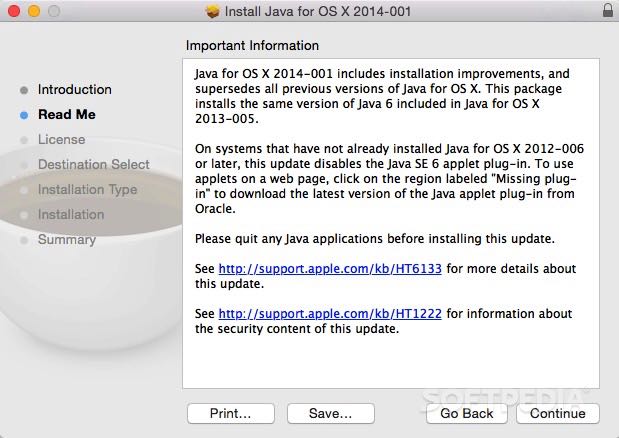

- #Java plug in for mac mac osx#
- #Java plug in for mac mac os#
- #Java plug in for mac install#
- #Java plug in for mac software#
#Java plug in for mac install#
Install Java runtime prompts when you attempt to use the applications.If the Java runtime is not installed, some issues that are known to occur include. Adobe recommends that corporate IT organizations pre install Java (or make sure that Java can be installed through their firewalls/security) to avoid conflicts with Adobe applications. If you encounter any issues, install Java to correct the problems. If you do not install Java before running an Adobe application, there can be missing or improperly behaving features.

At runtime, when you launch an Adobe application, you are prompted to install Java if it is not already installed. Or it can be installed later before you install Adobe applications. Adobe and Apple have worked together to ensure that you can install Java at OS install time.
#Java plug in for mac software#
Since current Adobe installers and applications were built before these changes by Apple, Adobe software anticipates that Java is installed.

It is now an optional install that you must select. Java Plugin Settings Applications / Utilities / Java Manages Java plugin settings You can use this application to configure and manage various Java plugins. Apple recently changed the way it includes Java in Mac OS, and with Lion, Java is no longer preinstalled. If, after installing Java for OS X 2014-001 and the latest version of Java 7 from Oracle, you want to disable Java 7 and re-enable the Apple-provided Java SE 6 web plug-in and Web Start functionality, follow these steps. Java HotSpot(TM) 64-Bit Server VM (build 23.Many Adobe applications depend on the Oracle Java Runtime Environment (JRE) for some features to work. Java(TM) SE Runtime Environment (build 1.7.0_09-b05) While you can still use Java 7 for software you have to write. What this will do is that it will replace the System Java Internet Plugin with the one which came default as part of Apple Java 6. On a Mac: Use Finder to get to: Applications -> Utilities -> Java and then, run the Java Preferences for. Sudo ln -sf /System/Library/Java/Support/Deploy.bundle/Contents/Resources/JavaPlugin2_ugin /Library/Internet\ Plug-Ins/ugin Then run the Java(TM) Plugin Control Panel. Sudo mv /Library/Internet\ Plug-Ins/ugin /Library/Internet\ Plug-Ins/disabled You can also see this in apple support forums here sudo mkdir -p /Library/Internet\ Plug-Ins/disabled Just run the commands below in your Terminal. Safari, Chrome, and Mozilla Firefox browsers running on.
#Java plug in for mac mac os#
IE Tab exactly emulates Internet Explorer, and enables you to test your web pages with different versions of IE (IE7 - IE11) Please note that IE Tab for Windows does require the use of a separate executable, ietabhelper.exe. The most recent upgrade to Apples MAC OS no longer supports the Java plug-in. Use Java, Silverlight, ActiveX, Sharepoint, and more. If you can’t get rid of Java 7 because you use it lets say for writing software, then you can continue to do that and simply switch your browsers to use Java Internet Plugin that came with Apple Java 6 but still keep using Java 7 for your other development activities. Display web pages using IE within Chrome. One way to fix this is to get rid of JDK 7 and go back to Apple Java 6 which came with your system. 32-bit browsers such as Chrome do not support Java 7 on the Mac platform. You will basically be told Chrome does not support Java 7 on the Mac platform. A 64-bit browser (Safari or Firefox, for example) is required to run Java 7 on Mac OS X.
#Java plug in for mac mac osx#
If you are using Mac OSX (i am on Lion) and you just installed Oracle JDK / JRE 7 your Java applets in Chrome will stop working.


 0 kommentar(er)
0 kommentar(er)
